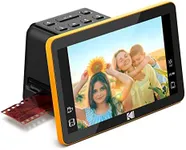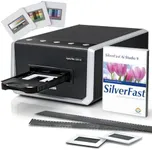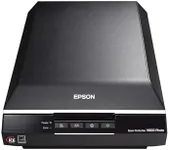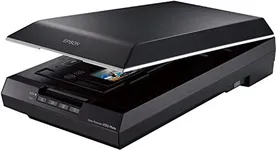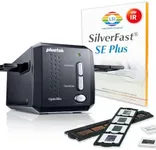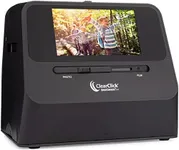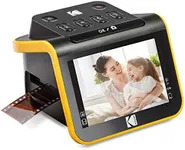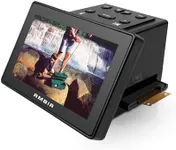Buying Guide for the Best Slide And Negative Converters
When choosing a slide and negative converter, it's important to consider several key specifications to ensure you get the best product for your needs. These devices are designed to digitize your old slides and negatives, preserving your memories in a digital format. Understanding the key features will help you make an informed decision and select a converter that meets your requirements.ResolutionResolution refers to the amount of detail the converter can capture from your slides and negatives, usually measured in dots per inch (DPI). Higher resolution means more detail and better quality images. For casual use, a resolution of 1800-2400 DPI is generally sufficient. If you plan to print large photos or need professional-quality images, look for a converter with a resolution of 3600 DPI or higher. Consider your end use: if you just want to view images on a screen, lower resolution may be adequate, but for archiving and printing, higher resolution is better.
CompatibilityCompatibility refers to the types of slides and negatives the converter can handle. Some converters are designed to work with specific formats like 35mm slides, while others can handle a variety of formats including 110, 126, and medium format. Make sure the converter you choose is compatible with the types of slides and negatives you have. If you have a mix of different formats, look for a versatile converter that supports multiple types.
SpeedSpeed indicates how quickly the converter can scan and digitize your slides and negatives. This is usually measured in seconds per scan. Faster converters can save you a lot of time, especially if you have a large collection to digitize. For occasional use, speed may not be as critical, but if you have hundreds or thousands of slides and negatives, a faster model will be more efficient and less time-consuming.
Ease of UseEase of use encompasses the user interface, software, and overall design of the converter. A user-friendly converter will have intuitive controls, clear instructions, and easy-to-use software for editing and organizing your images. Look for features like automatic color correction, dust and scratch removal, and batch scanning capabilities. If you're not tech-savvy, prioritize models that are known for their simplicity and ease of use.
ConnectivityConnectivity refers to how the converter connects to your computer or other devices. Most converters use USB connections, but some may offer additional options like Wi-Fi or memory card slots. Ensure the converter is compatible with your computer's operating system and has the necessary ports. If you prefer a more flexible setup, look for models with multiple connectivity options.
Storage OptionsStorage options pertain to how and where the digitized images are saved. Some converters save images directly to a memory card, while others require a computer connection to transfer files. Consider your workflow and storage preferences. If you want to avoid using a computer, choose a model with built-in storage or memory card support. If you prefer to edit and organize images on your computer, a USB-connected model will be more suitable.
Image Editing FeaturesImage editing features include tools and software that allow you to enhance and correct your digitized images. Common features include color correction, cropping, rotating, and removing dust and scratches. These features can save you time and improve the quality of your digitized images. If you want to do minimal post-processing, look for a converter with robust built-in editing features. If you prefer to use external software for editing, this may be less important.
